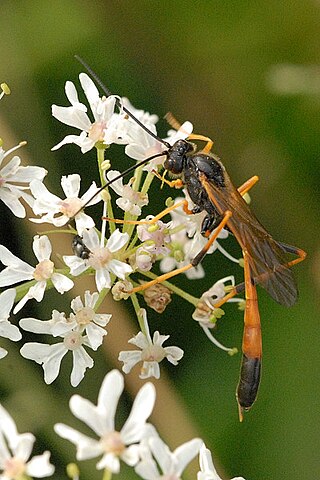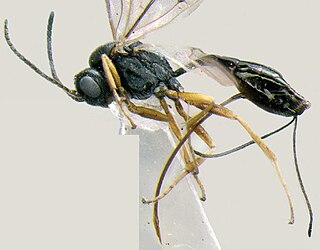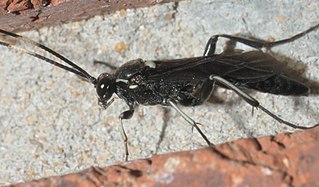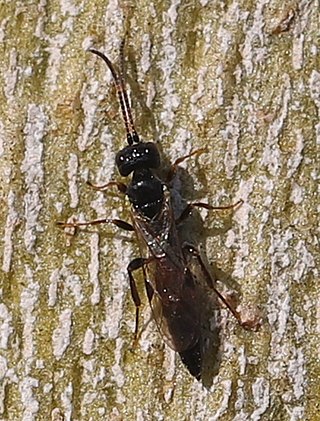
The Ichneumonidae, also known as ichneumon wasps, ichneumonid wasps, ichneumonids, or Darwin wasps, are a family of parasitoid wasps of the insect order Hymenoptera. They are one of the most diverse groups within the Hymenoptera with roughly 25,000 species described as of 2016. However, this likely represents less than a quarter of their true richness as reliable estimates are lacking, along with much of the most basic knowledge about their ecology, distribution, and evolution. It is estimated that there are more species in this family than there are species of birds and mammals combined. Ichneumonid wasps, with very few exceptions, attack the immature stages of holometabolous insects and spiders, eventually killing their hosts. They thus fulfill an important role as regulators of insect populations, both in natural and semi-natural systems, making them promising agents for biological control.
Thomas Ansell Marshall was an English cleric and entomologist, mainly interested in Hymenoptera. He was the son of Thomas Marshall, one of the original members of the Royal Entomological Society of London.

Acaenitinae is a subfamily of the parasitoid wasp family Ichneumonidae. Female Acaenitinae have a large triangular projecting genital plate.

Anomaloninae is a subfamily of parasitoid wasps in the family Ichneumonidae. Several species provide beneficial services to humans by attacking forest or orchard pests.

Ichneumoninae is a worldwide subfamily of the parasitic wasp family Ichneumonidae.

Tersilochinae is a worldwide subfamily of the parasitic wasp family Ichneumonidae.

Lusius is a genus of parasitoid wasps in the tribe Phaeogenini Förster, 1869 or Alomyini Förster, 1869, first described by Pierre Jules Tosquinet in 1903, published after his death. The genus is similar in appearance to species in the genus Heterischnus. Lusius occurs in the Oriental, Afrotropical, Neotropical and Australasian biogeographical regions.

Trogus is a genus of parasitoid wasp found in the Holarctic and Neotropic regions. It is placed in the subfamily Ichneumoninae and the tribe Ichneumonini. Trogus species are parasites of larvae and pupae of the swallowtail butterfly family, Papilionidae. The genus consists of twelve extant and one extinct species.

Ichneumonini is a tribe of ichneumon wasps in the family Ichneumonidae. There are more than 350 genera and thousands of described species in Ichneumonini.

Netelia is a genus of ichneumonid wasps in the subfamily Tryphoninae. There are over 330 described species in Netelia grouped into 12 subgenera.
Dolichomitus is a genus of ichneumon wasps in the family Ichneumonidae. There are at least 70 described species in Dolichomitus. The name is derived from the Greek dolicho, meaning long or narrow, and the Greek mitus, meaning a thread.

Exetastes is a genus of parasitoid wasps belonging to the family Ichneumonidae.
Alexeter is a genus of insect belonging to the family Ichneumonidae.

Aptesis is a genus of parasitoid wasps belonging to the family Ichneumonidae. The genus was first described by Arnold Förster in 1850 and has almost cosmopolitan distribution.
Eriborus is a genus of parasitoid wasps belonging to the family Ichneumonidae.
Allomacrus is a genus of parasitoid wasps belonging to the family Ichneumonidae.
Abzaria is a genus of ichneumon wasps in the family Ichneumonidae. There are at least two described species in Abzaria.
Eurylabus is a genus of ichneumon wasps in the family Ichneumonidae. There are about 11 described species in Eurylabus.

Phaeogenini is a tribe of ichneumon wasps in the family Ichneumonidae.

Platylabini is a tribe of ichneumon wasps in the family Ichneumonidae. There are at least 40 genera and about 8 described species in Platylabini.












